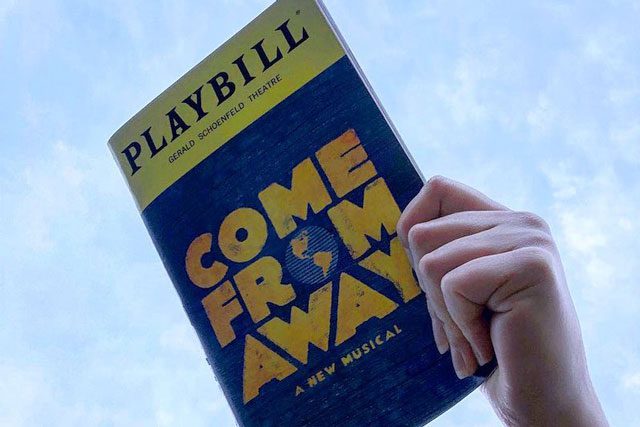The Salvation Army shines brightly in secular Broadway musical.
By Jessica Zielinski –
On Sept. 11, 2001, tragedy struck in the United States. The Salvation Army was one of the first relief agencies to respond, but this is not a story of what happened in New York.
The musical “Come From Away,” now touring North America, opened on Broadway in March 2017 and tells the story of the town of Gander, in Newfoundland, Canada. Gander and other nearby towns welcomed 7,000 passengers diverted to the Gander Airport when U.S. airspace closed shortly following the 9/11 terror attacks.
In Gander, the people who were diverted there were affectionately called the “come from aways.” The story is one of hope in one the most tragic moments of America’s history. Peppered throughout the musical are moments with and mentions of The Salvation Army and its contributions. It may not sound like the best premise for a musical, but humor, heart and love shine through the story in its infectious genuineness and generosity.
At the beginning of the musical, Mayor Claude Elliot is discussing the bus strike at the local Tim Hortons when news of the attack reaches him. Salvation Army Officer Major Alf Richardson was down the road having lunch with his staff when Major Ron Stuckless brought the news of the diverted planes.
In real life, as well as in the show, the mayor, a Salvationist himself, declared a state of emergency, and disaster measures began to be put in place. Richardson recalled the Red Cross asking for volunteers and less than an hour later, 35 uniformed Salvationists had been put to work registering the passengers.
When it was clear the planes would not be leaving any time soon, the passengers were finally allowed to disembark—up to 28 hours after they had landed. In a short amount of time, 400 volunteers made 7,000 lunches and greeted each passenger not only with a lunch, but also with a hug.
In the show, Elliot says he “felt that at that time they probably needed a hug more than they needed food,” a true demonstration of meeting more than just physical needs.
The production’s hilarious song “Blankets and Bedding” brings to life the frenzy and energy often associated with the initial hours of a disaster response team. Donations are brought in and pots of food are delivered. “What do you do in a town that has a population of 8,000 and no major cafeterias or places to eat?,” Richardson said. “By 5:30 that same afternoon when I went back on the air, all I needed were 300 meals, which were quickly provided.”
The crowd laughs as the cast recounts The Salvation Army’s request for the hockey rink to be requisitioned to store the massive quantities of food they were receiving—“the world’s largest refrigerator.”
But it is in the song “Darkness and Trees,” as displaced passengers are being dropped off at The Salvation Army Twin Ponds Camp, that especially touches hearts.
A Salvation Army soldier, dressed in his uniform, meets a group of diverted people from Africa, only to discover their fear and lack of a translator. He notices a Bible in a woman’s hand and worked out the numbering system well enough to show them Philippians 4:6: Be anxious for nothing.
It reassures the group that they were safe, and in a moment of beautiful unity, the leader of the bus group and the soldier remark together, “and that’s how we started speaking the same language.”
While the story of “Come From Away” is not about The Salvation Army, the spirit of the Army shines through, leaving you with the desire to hug everyone you can after leaping to your feet for a standing ovation.
Find North America tour stops and the soundtrack at comefromaway.com.










